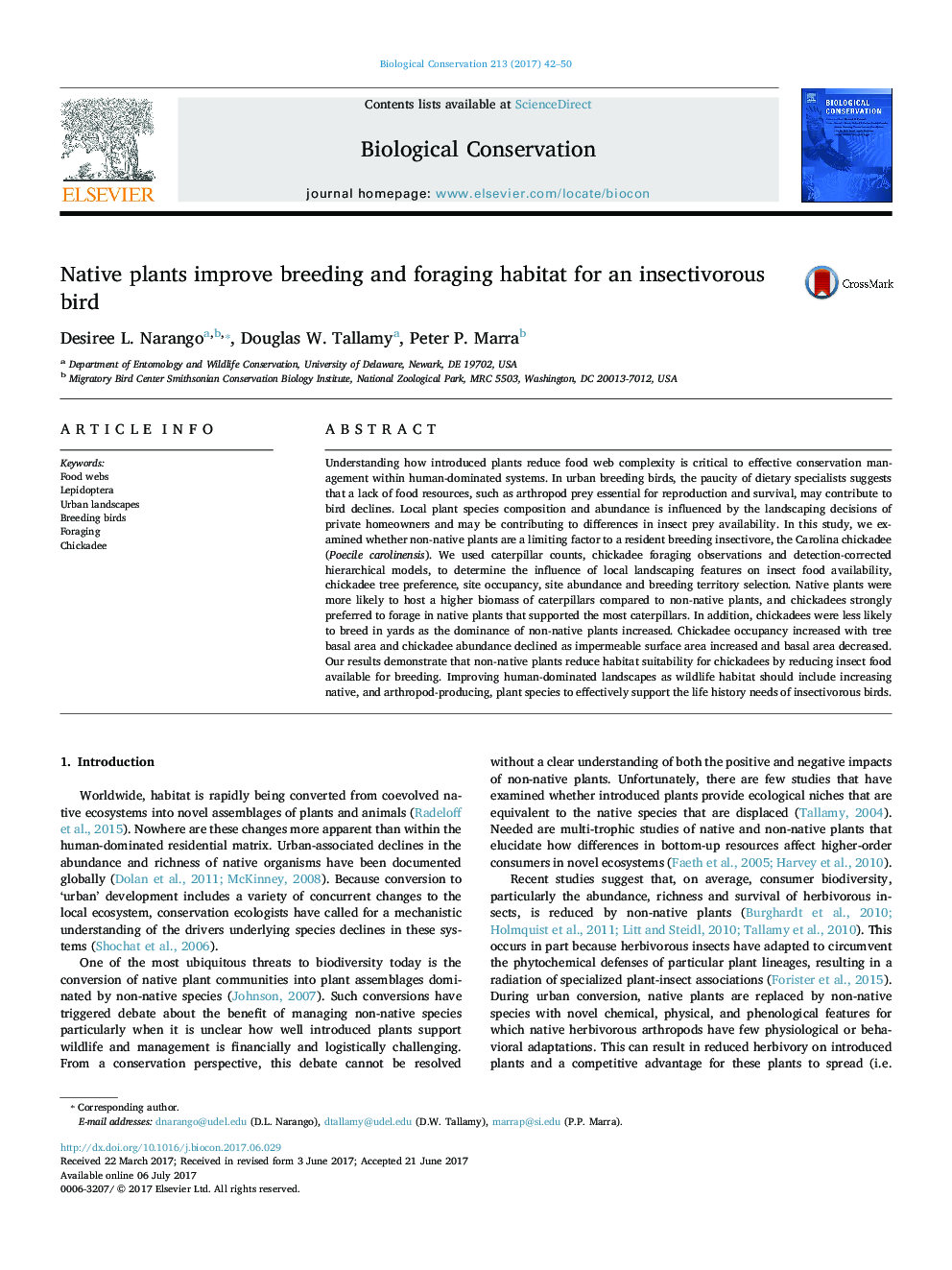| کد مقاله | کد نشریه | سال انتشار | مقاله انگلیسی | نسخه تمام متن |
|---|---|---|---|---|
| 5742981 | 1412292 | 2017 | 9 صفحه PDF | دانلود رایگان |
- Native plants support higher abundance of caterpillars than non-native plants.
- Chickadees preferred to forage in native plants compared to non-natives.
- A 'Lepidoptera index' predicted food availability & chickadee native plant preference.
- Chickadees were more likely to breed in sites with native plants.
Understanding how introduced plants reduce food web complexity is critical to effective conservation management within human-dominated systems. In urban breeding birds, the paucity of dietary specialists suggests that a lack of food resources, such as arthropod prey essential for reproduction and survival, may contribute to bird declines. Local plant species composition and abundance is influenced by the landscaping decisions of private homeowners and may be contributing to differences in insect prey availability. In this study, we examined whether non-native plants are a limiting factor to a resident breeding insectivore, the Carolina chickadee (Poecile carolinensis). We used caterpillar counts, chickadee foraging observations and detection-corrected hierarchical models, to determine the influence of local landscaping features on insect food availability, chickadee tree preference, site occupancy, site abundance and breeding territory selection. Native plants were more likely to host a higher biomass of caterpillars compared to non-native plants, and chickadees strongly preferred to forage in native plants that supported the most caterpillars. In addition, chickadees were less likely to breed in yards as the dominance of non-native plants increased. Chickadee occupancy increased with tree basal area and chickadee abundance declined as impermeable surface area increased and basal area decreased. Our results demonstrate that non-native plants reduce habitat suitability for chickadees by reducing insect food available for breeding. Improving human-dominated landscapes as wildlife habitat should include increasing native, and arthropod-producing, plant species to effectively support the life history needs of insectivorous birds.
Journal: Biological Conservation - Volume 213, Part A, September 2017, Pages 42-50
